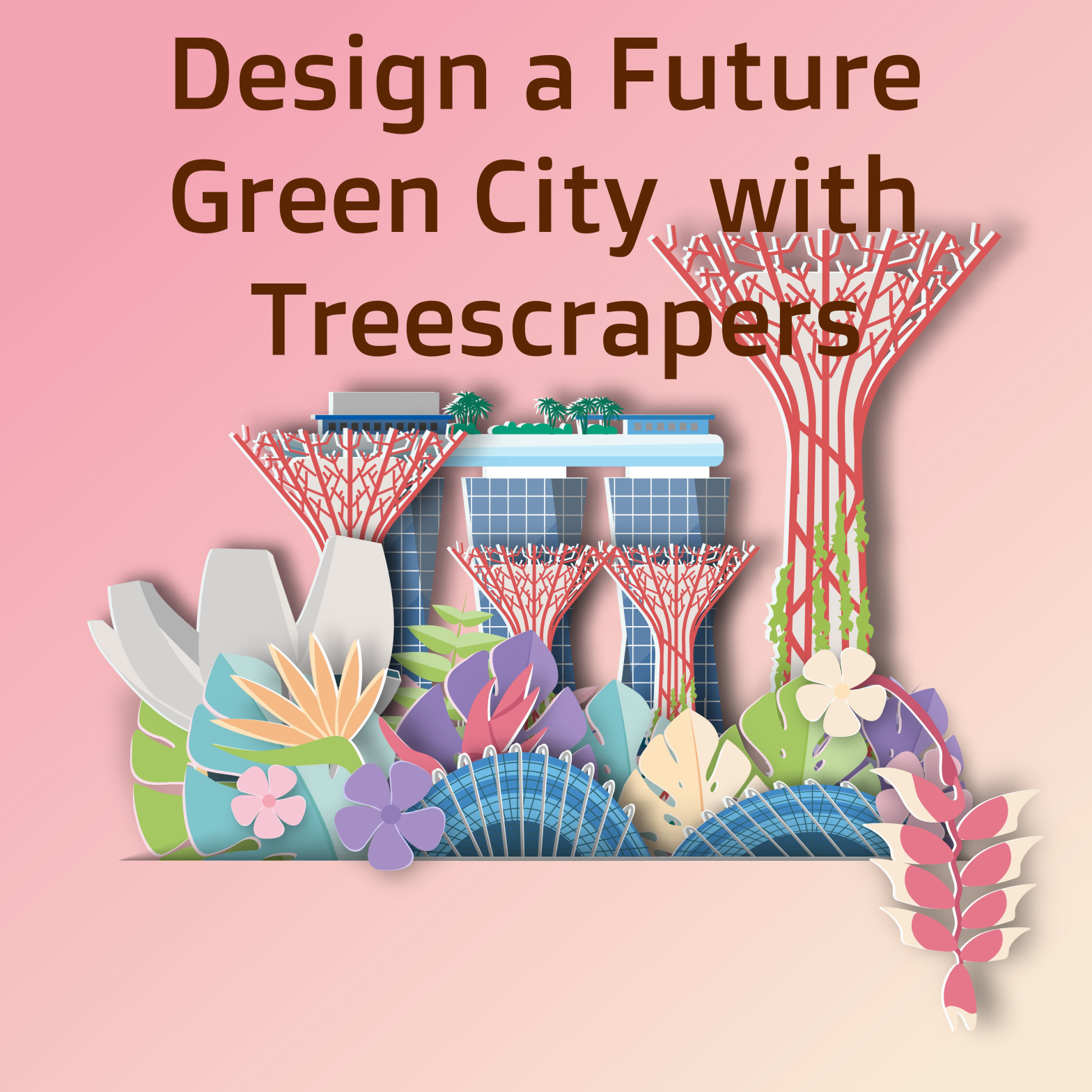Treescrapers are a skyscrapers that works like a tree. The scrapers make oxygen, distill water, and produce energy. Let’s design a City with Treescrapers.
In a previous blog post Cities that help save the planet, two examples of green ideas for cities were explored – the Gardens by the Bay in Singapore and Bosco Verticale in Milan. In this blog post, we will explore ways to design a green city with treescrapers inspired by ideas from these two cities and other sustanable buildings.
Problems that we need to solve
To start with, let’s look at some important ideas and problems that we need to solve when it comes to cities of the future.
- How to design a city that is built for both humans and animals and plants.
- How to solve problems with lack of biodiversity.
- How to deal with air pollution.
- How to grow food.
- How to design for changes in climate – flooding, heatwaves and cold spells.
- How to save water.
- How to deal with overcrowding.
- How to build communities in big cities.
- How to provide sustainable transportation.
What can we learn from Singapore?
Singapore is unique - a place that is designed to serve both as a city and nature. In the 1960s, the city was heavily polluted but now it is one the greener cities in the world. Also, Singapore is now richer in species than any other city in the world. The riches applies to all areas of the city. Polluted waterways have been cleaned up and species are coming back to these places. Buildings are intertwined with both natural and produced biodiversity under the green initiatives.
In the Gardens by the Bay supertree structures are filled with life. Creepers are climbing on the steel structures, making it a perfect home for a variety of animals. Skyways connect the some of the giant tree structures. The trees come alive in the night but the lightshow is restricted to 1 hour each evening. This ensures that there is as little as possible disturbance to the wildlife.
The tall trees provide much needed shade during the hottest hours of the day. The structures are made of concrete and metal, and covered with a living skin consisting of 200 different species of plants. The plants have been chosen for their ability to climb and also to braid a thick green covering. You can find several bird species living in the Gardens by the Bay, for example, bee-eaters and kingfishers.
Greening of wall and roofs
Greening of roofs and walls can provide a rich habitat for wildlife. In Milan, two towers host 800 trees. The trees produce oxygen, capture as well as store CO2. By using green roofs, vertical forests – it is possible to can grow plants on a smaller area as compared to when planting trees in a woodland.
- Vertical gardens require that you use carefully selected plants.
- The trees require pruning.
- Need to consider how much sun the plants receive.
- How to water the plants.
- What soil to use and making sure that the soil is not too heavy.
The largest rooftop garden – La Pista 500 in Turin. This roof garden sits upon the former Fiat factory.
Wildflower Meadows on the Roof
Sustainability in Copenhagen
While Singapore has undergone major changes, Copenhagen has focused on overhauling its sustainability practices. The city has kept most of the existing structures.
Draw and Build a Model of Your Green City of the Future!
For this challenge you are going to make a design for a green city. You need to build not only for humans but also with others in mind.
Make a drawing of your design. You can also make a model using recycled materials and materials found in nature – just be careful when you take things from nature.
Go on a nature walk or a walk in a local park. Collect things from nature like moss, sticks, pine needles, pine cones, bark, flowers all work well when you are making a treescraper.
Click here or here for more inspiration for treescrapers designs. I will post our ideas tomorrow!
Have fun!

One thought on “How to Design a Future Green City with Treescrapers”